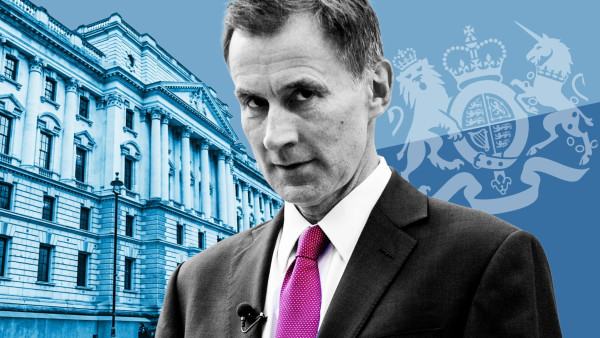

Jeremy Hunt's second financial statement this year means that FTAdviser's Tax Table is back with its fourth iteration in 2022.
But unlike most sequels which end up going straight to DVD, this one has been marked as important, because it has been branded an Autumn Statement of 'New Austerity', signifying a return to the bad old days post-financial crisis for many Britons.
It is clear from this Autumn Statement that freezes have become the Treasury's favourite tool of taxation by stealth, and where a series of tax breaks promised by the former primer minister Liz Truss and her short-lived chancellor Kwasi Kwarteng have been reversed - painfully so - for millions of households.
The so-called 'squeezed middle' fare badly, especially at a time when inflation has peaked to a 41-year high at 11.1 per cent in October, according to latest Office for National Statistics.
Moreover, energy bills are set to devour household savings this winter, and commentators have predicted at least another couple of base rate rises, taking the bank base rate from 3 per cent to peak at 4 per cent or so in the coming months.
But his focus on stability, growth and public services means all these things "have to be paid for", he said in his speech.
Here is the latest FTAdviser tax table, therefore, which outlines some of the headline changes in this latest tax take from the government.
| Spring Statement 2022 | "Mini" Budget September 2022 | October 17 | New: November 17 | |
| Income tax and personal allowances | Bringing the £12,570 threshold into immediate effect. Basic rate of income tax will be cut from 20p in the pound to 19p from 2024. | Cut in the top rate of income tax from 45 per cent to 40 per cent from April 2023. Reducing the basic rate from 20 per cent to 19 per cent from April 2023 | No reduction in the basic rate of income tax from April 2023. It will remain at 20 per cent "indefinitely". |
Other personal thresholds frozen until 2028. |
| Dividend tax | - | Dividend tax rates fall to 7.5 per cent for basic-rate payers, 32.5 per cent for higher-rate payers; the 38.1 per cent for additional rate taxpayers will also be removed to align with the dividend upper rate, which is being reduced to 32.5% from 6 April 2023. | No cut to dividend tax rates after all. | Dividend threshold to lower from £2,000 to £1,000 next year, then to £500 from April 2024. |
| Pension allowances | - | Nothing on the Lifetime Allowance, MPAA or PLA | - | LTA thresholds remain frozen, as does MPAA and PLA. Increasing pension credit for poorest pensioners. Will also protect the triple lock. This means Pension credit and state pension going up 10.1%. |
| Capital gains tax | - | Nothing in the 42-page Growth Plan | - | CGT exemption to decrease from £12,300 to £6,150 next year, then £3,000 in April 2024. |
| Bank levy | - | Cap on bankers' bonuses has been removed | - | From April 2023, banks will be charged an additional 3% rate on their profits above £100mn; £280m will be invested in the Department of Work and Pensions to crack down on benefit fraud and errors. |
| Inheritance tax | - | Nothing on IHT | - | The freeze on the IHT threshold remains for both the nil-rate band and residential nil-rate bands to 2028 |
| Corporation tax | - | Cutting the 25 per cent rise back to 19 per cent. | No cut to corporation tax after all - as announced by Truss after the sacking of Kwasi Kwarteng. | No mention of raising corporation tax. |
| Tax on savings interest | - | No subscription rate changes; EIS has been extended | - | - No changes to EIS |
| National Insurance contribution | - | Repeal of the 1.25 percentage point NI hike in 2022 | This is still repealed. | - |
| VAT | Households with energy-saving materials installed will pay 0 per cent VAT on them. | No VAT for foreign visitors to the UK | No VAT-free shopping scheme for non-UK visitors. | - |
Stamp Duty Land Tax | - | SDLT cut of up to £2,500 for properties from 23 September 2022.The threshold at which first-time buyers begin to pay SDLT will increase from £300,000 to £425,000, and the maximum value of a property on which first-time buyers’ relief can be claimed will also increase from £500,000 to £625,000. | SDLT cut remains in place for now. | Changes will only last until 2025. For current homeowners, SDLT will be payable above £250,000 and fall back to £125,000 in 2025. |
| Environmental taxes | Plans to remove some of the red tape around people using alternative energy sources. A 5p cut in the price of petrol per litre for 12 months. | Energy Price Guarantee will cap the unit price that consumers pay for electricity and gas. The government will deliver £150 of the saving by covering the environmental and social costs, including green levies, currently included in domestic energy bills for two years. | Hunt has confirmed the energy price guarantee will only be in place until April 2023. | From January 1 to March 28, levy will rise from 25% to 30%; From January 1 new temporary 45% levy on electricity generators. |
| Business rates and Restart | Confirmation of the reliefs already mentioned. | NI waiver for investment zones | - | Proceeding with the revaluation of business properties from April 2023, but there will be a tax cut over the next five years and the introduction of a new relief scheme. |
| Entrepreneurs' relief (Business Asset Disposal Relief) | - | No changes | - | No changes to R&D and will publish a decision on Solvency II to unlock development for growing British companies. |
| New: Health and Social Care tax | - | Levy to be scrapped altogether from 2023 onwards | - | DWP and NHS will publish a plan for the number of health pros UK will need in 5, 10 and 15 years' time. Council taxes freed to rise up to 5% over next two years to cover social care costs. |
| New: Residential Property Development Tax | - | - | - | |
| New: Employment Allowance relief | From April 2022, the allowance will increase to £5,000 and will affect half a million small businesses. | - | - | |
| IR35 | - | "The 2017 and 2021 reforms to the off-payroll working rules (also known as IR35) will be repealed from 6 April 2023." - Growth Plan document, page 30. | There will now be NO reversal of off-payroll working reforms introduced in 2017 and 2021. The original changes will go ahead as planned. |
We await 2023's spring Budget without a great deal of enthusiasm.
simoney.kyriakou@ft.com




